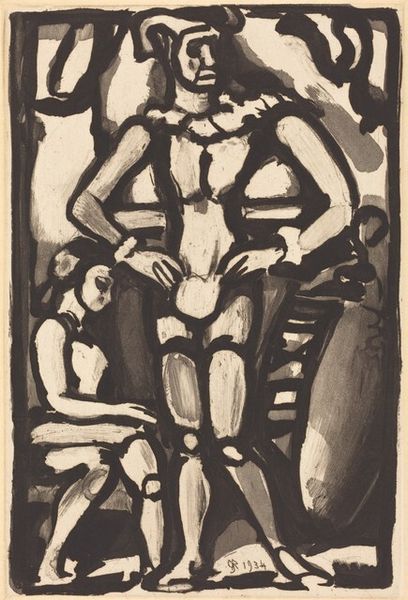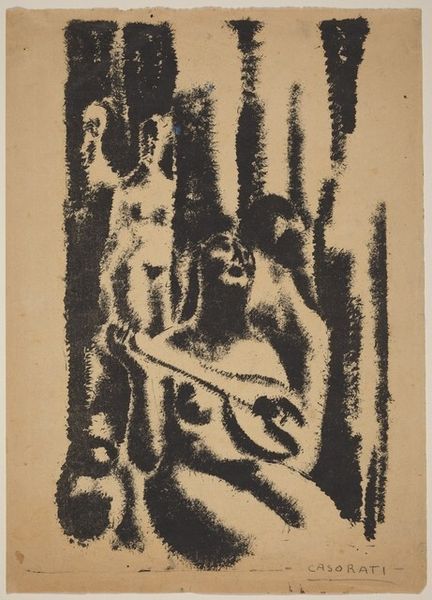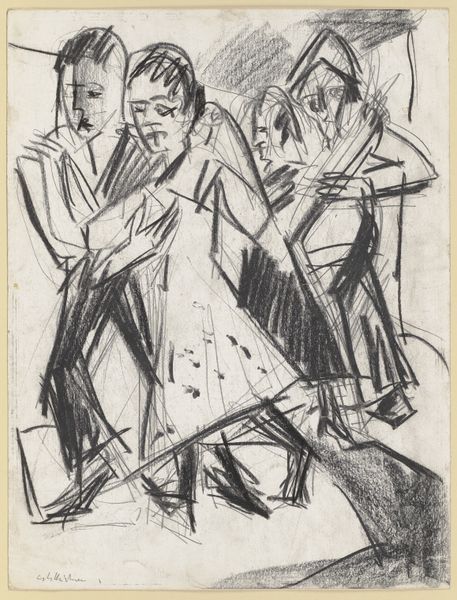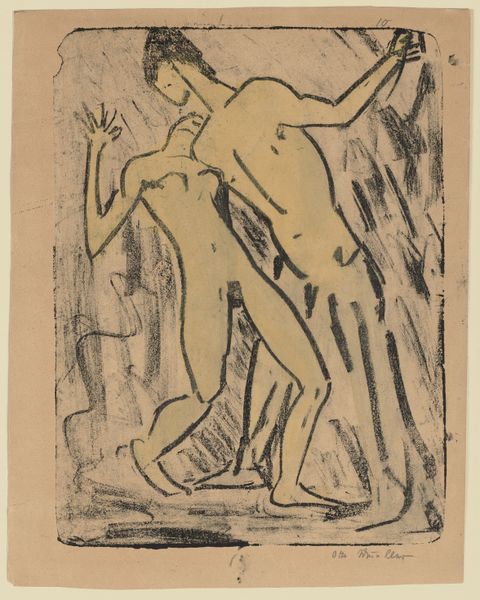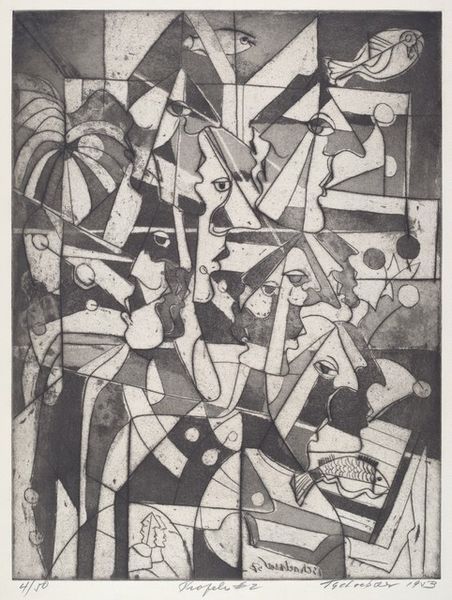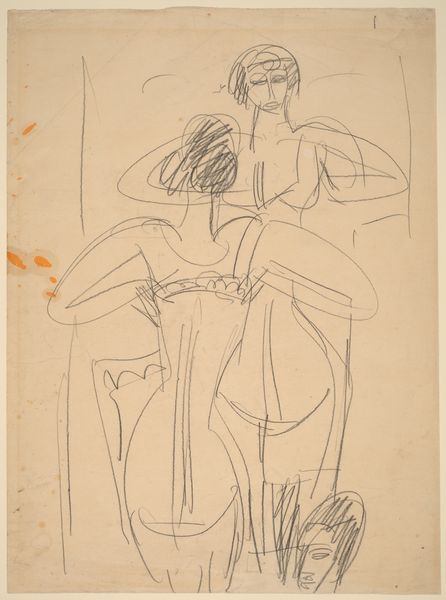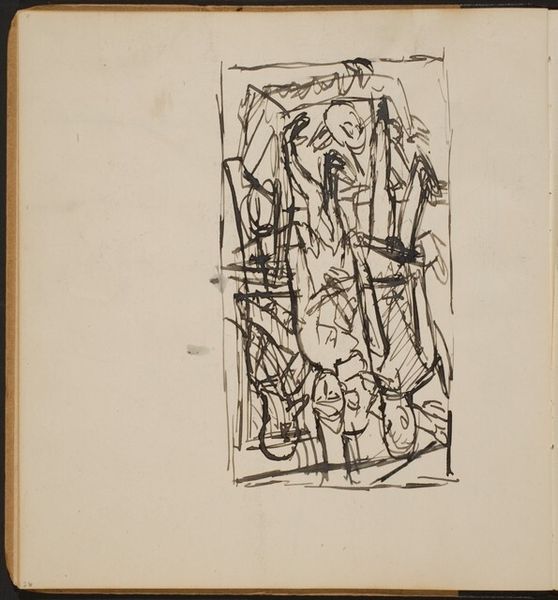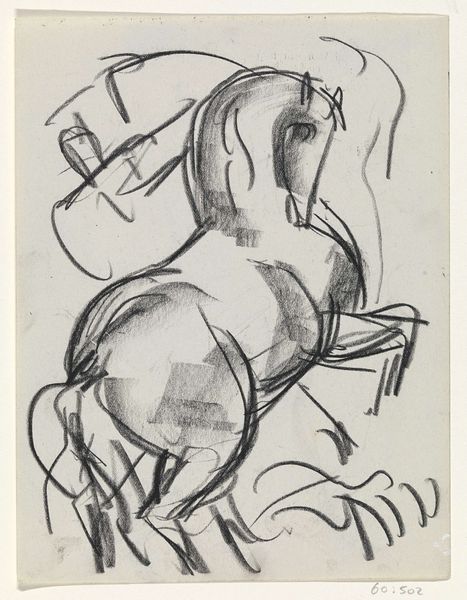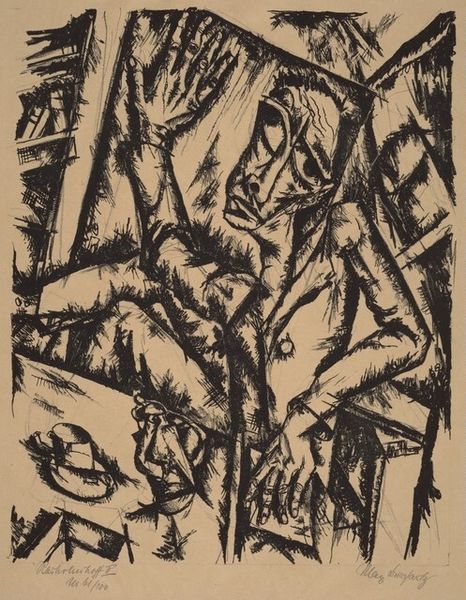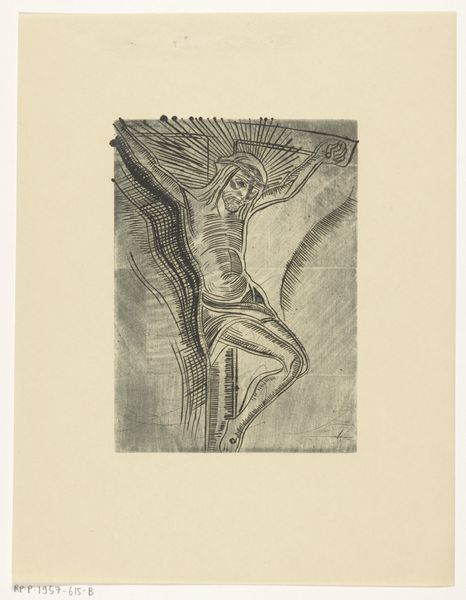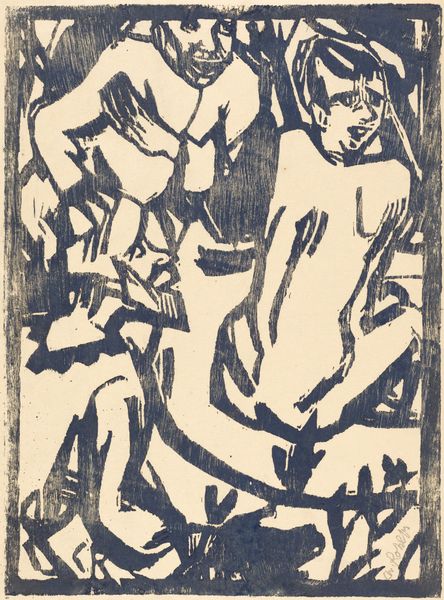
Copyright: National Gallery of Art: CC0 1.0
This black ink drawing, “Arabesques,” is by Georges Rouault, though the date of production is unknown. Rouault's fluid and gestural approach to the figures’ contours hints at a fascination with the art-making process itself. He creates a dynamic interplay between light and shadow, with stark contrasts that lend the figures a weighty, almost sculptural presence. Look at the ballerina's tutu. The strokes are both delicate and forceful, capturing the fabric's lightness while giving it depth. He manages to create a sense of volume and movement, as if we are seeing the dancer mid-twirl. It’s not too dissimilar to the work of Degas, who also loved dancers, though this has a much more brutal, less romantic quality. Ultimately, "Arabesques" reminds us that art isn't about capturing a single, definitive truth. Instead, it's about embracing ambiguity, celebrating the ever-evolving dance between the artist, the subject, and the viewer.
Comments
No comments
Be the first to comment and join the conversation on the ultimate creative platform.
